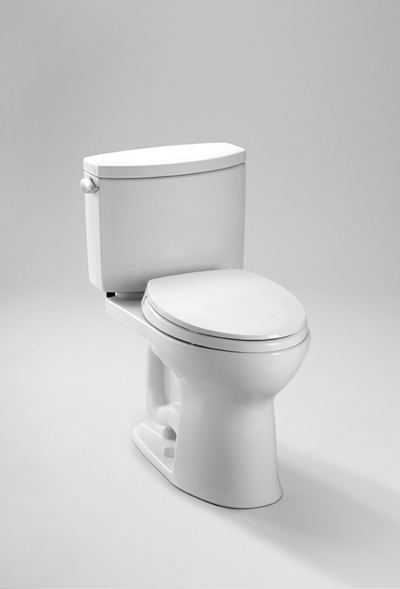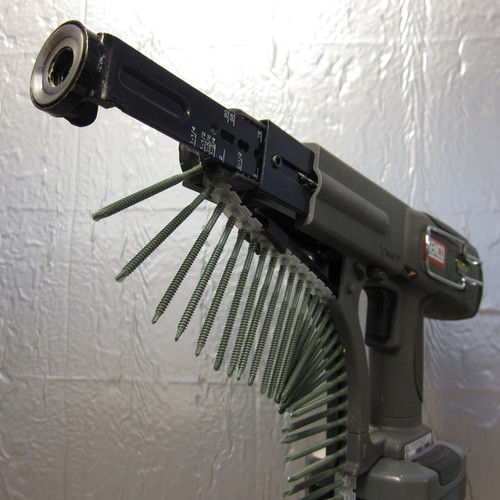
Image Credit: TOTO USA
The last couple weeks I’ve written about two of the common myths of green building: that it has to cost more to build green and that green building is mostly about materials. This week I’ll cover another myth: that green building products don’t perform as well as conventional products.
A lot of people still point to products like early water-saving toilets, compact-fluorescent lamps, and recycled-plastic-lumber decking as evidence that new-fangled green products don’t work very well. Clearly, there were some poorly performing products out there as manufacturers scrambled to respond to consumer demand and new regulations. But, for the most part, we’ve climbed up that learning curve, and current-generation products work very well.
Let’s take a look at the history of a few of these product categories.
Low-flush toilets
The Energy Policy Act was signed into law in 1992 with a requirement that all toilets sold in the U.S. had to use no more than 1.6 gallons per flush (gpf) by January, 1994. That wasn’t much time for the plumbing industry to redesign their toilets, and many of those early 1.6-gpf toilets were indeed pretty unsatisfactory, requiring double flushing and frequent cleaning.
The problem was that those first low-flush toilets weren’t designed from-the-ground-up to use 1.6 gallons for a flush; they were older toilets with bowls and trapways that had been designed to use 3.5 gallons or more; the only change was a modified flush valve that reduced the flush volume. Industry got the message loud and clear, and later models were designed to flush very well with 1.6 gpf—and some with even less. A new test procedure for toilet performance (Maximum Performance or MaP testing), introduced in 2003, helped manufacturers design better toilets by more accurately measuring flush performance.
The bottom line is that complaints about new 1.6 gpf toilets have largely disappeared and, in fact, a new generation of “high-efficiency toilets” (HETs) that use even less water (HETs are defined as using at least 20% less water than the federal standard, or a maximum of 1.28 gpf) often actually outperform those 3.5 gpf toilets that were on the market in 1990. We’re using far less water today and getting better performance.
Compact-fluorescent lamps
Early compact-fluorescent lamps (CFLs) used magnetic ballasts causing the lamps to blink as they switched on, then flicker 60 times a second and buzz or hum during operation. New CFLs all use “electronic” ballasts that switch on instantly and eliminate flickering and buzzing. The light quality has also improved. The phosphors (the coatings on the inside of the glass that absorbs the UV light given off by the energized mercury vapor gas and emits white light) used in most CFLs today produce warmer light that makes objects look more realistic. The light quality from the best CFLs today nearly matches that of incandescent light bulbs.
Recycled-plastic lumber
The first recycled-plastic decking was made from 100% recycled plastic–usually high-density polyethylene (HDPE). The decking planks were very heavy, usually black, got really hot in the sun, and softened to create undulating deck surfaces. Today, most recycled-plastic decking is made of a composite material, with both waste wood fiber and recycled HDPE. The wood fibers increase the decking strength and reduce thermal expansion, so sagging is less of a problem. It’s a much better product.
Low-VOC paints
Early efforts to reduce the volatile organic compound (VOC) content of paints to improve indoor air quality led to compromises in performance. The solvent-based products performed much better even as they gave painters headaches and likely contributed to health problems among homeowners. Over the past 10- 15 years, though, the vast majority of R&D work going into paint technology has been focused on acrylic-based, low-VOC products, and performance has dramatically improved. Indeed, there are now zero-VOC paints that satisfy the toughest performance standards of the paint and coatings industry. New and improved products continue to appear almost monthly.
* * *
I’ve reviewed just a snapshot of product categories here. The point is that the manufacturing industry has responded to consumer and regulatory demand for greener, more-efficient, healthier products. While there are still green products whose performance isn’t where we’d like it to be, most green products work very well today. And we can look forward to continued improvement in the years ahead.
I invite you to share your comments on this blog. Do you think “green” product performance is improving? Are there examples of continuing performance problems among green products?
To keep up with my latest articles and musings, you can sign up for my Twitter feeds
Weekly Newsletter
Get building science and energy efficiency advice, plus special offers, in your inbox.















5 Comments
Green upgrades
I replaced two toilets, a shower and a sink in my home and have been thrilled with their performance. The toilets are 1.28 GPF and are the best I have ever had and my 2.5 GPM delivers a strong stream of water (sorry Seinfeld)!
Compact Fluorescent Bulb Issues
As an experienced user of CFLs I think it is reasonable to point out that there are some design issues with these bulbs that, to the best of my knowledge cannot be fixed...this is not a recommendation NOT to use them but at least to be aware.
1) CFL light output deteriorates with time with at least two immediate problems. First, when the light output falls below what you consider acceptable then you will be replacing them prematurely and you will lose out on the promised economic benefits...and in my experience CFL light output is barely adequate when new. Second, when the first light in a room with several lights fails, the replacement bulb will be noticeably brighter...that drives my wife nuts particularly in the kitchen where the lights are on a lot. I end up replacing every bulb when one goes bad. Luckily I have a scheme to deal with the remaining operable, but down on power, bulbs...I move them to another room where the light output is not so critical. Still it is a definite hassle and extra expense as I have a collection of partly used bulbs that will probably never be put back into service...I wonder how this skews the statistics on bulb consumption and use as I'm sure I'm not the only one with this issue.
2) If you use the bulbs outside, for example in porch lights as I do, be aware that they produce very little heat...this sounds good and of course is a large part of why there are more efficient than an incandescent bulb...however, in an outdoor application the light attracts bugs (in my area wasps and mud daubers) to create nests inside the light fixtures...there is no heat to dissuade them! So, every year I have to remove the bulbs, kill the pests (have to buy insecticide) take the fixtures apart (or remove them) , clean them out, and reinstall the fixtures...major hassle.
One further point - despite claims to the contrary, even recently purchased bulbs with major manufacturer labels do not last to their expected life. Not to be totally negative on these things - I am using plenty of them in my house - the best application in my opinion are can lights where you can get reasonable light (still not as good as halogens) without the heat and that are on a lot. In my house my office is above the kitchen in which there are 9 cans. In the summer I use CFLs which reduce heat load through the floor to my office and keep it more comfortable (and probably reduce my AC bill a little) and in the winter I put the halogens in and they heat my office...I can actually turn all other heat off upstairs (no kids at home anymore) and be warm enough...
Compact Flouresent Bulb Issues
I agree with John, I have yet had one live its advertised life and brightness. But I'm more concerned with disposal. Before I retired from the Army I had switched to Active Reserve, being stationed at Battalion and Group HQ's. A big push was on to "Go Green" and I was the Environmental NCOIC as an additional duty after several Hazmat classes. Commands had contracted trucks that went center to Reserve center and one of the pick ups was for "Florescent Bulbs". Although these were larger commercial bulbs, we will now have millions of these smaller CFL's hitting the land fills and crushed. So just how "Green" is this? I see rechargeable battery disposal boxes at big Box stores, but nothing for the CFL's or Larger Florescent Bulbs. Also nothing at our local Transfer Station for these (or larger). I've asked, and they just throw them in the crusher.
CFL life
I think that the effect of on and off cycles is not much mentioned but very important in the life of CFLs. At work, I have over 100 CFL bulbs in exterior fixtures, where they are photocell controlled. Year round, they average about 12 hours per day with normally only one on/off cycle per day. We date the bulbs when installed and find that we get right around 5 years life. This is about 3 times the rated life of about 8000 hours which they describe as 3 hours per day for five years.
These bulbs are nothing special, they are the cheapest 60W equivalent bulbs the local big box has. The brands change depending on which ever one is cheapest. The results remain the same.
Personally, I stick with incandescent bulbs in places like the hallway that I seldom leave it on for more than the half a minute it takes to walk its length and CFLs for bulbs that I generally turn on and leave on for an extended period of time.
CFLs recycle
Here In Seattle we can drop off fluorescent bulbs compact or tubes and Home Depot. The bin is near the returns counter just inside the main door.
Log in or create an account to post a comment.
Sign up Log in